Ben Line Steamers of Leith S.S. Benrinnes built
in 1914
Please Note: Firefox, iPhones, iPads & some other Search Engines may not be suitable
Please Note: All ssmaritime and my
other related ssmaritime sites are 100% non-commercial and privately owned
sites. Be assured that I am NOT associated with any cruise or shipping
companies or travel/cruise agencies or any other organisations! The author has
been in the passenger shipping industry since May 1960 and is now semi-retired,
but continues to write article on classic liners and cruise ships in order to
better to inform cruise and ship enthusiasts for their pleasure!
S.S. Benrinnes
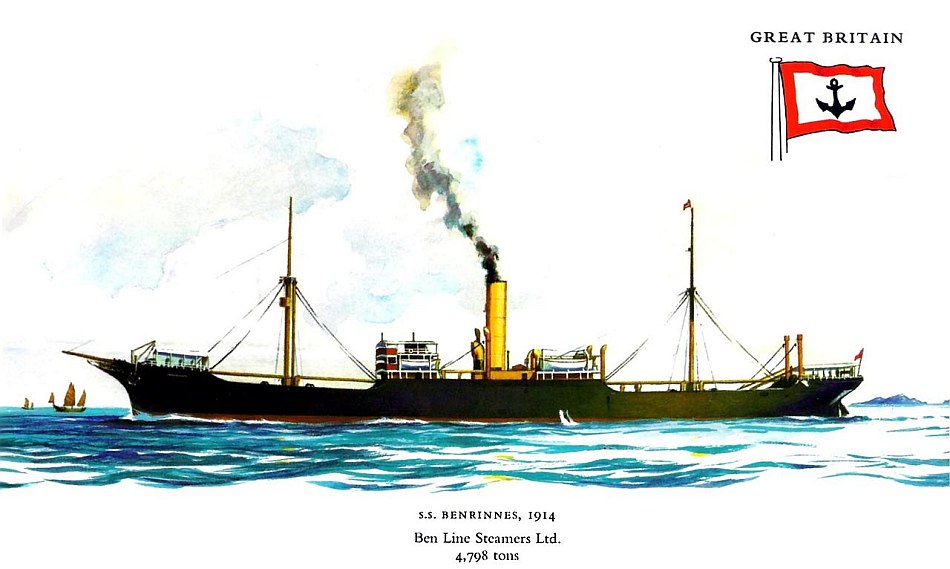
With
Introduction to Ben Line
The origins of “Ben Line Steamers
Ltd” commenced with the completion of a fine sailing ship, the Barque “
In 1847
As the company continued to expand,
services were extended to the
In 1919 the company was officially renamed
the "Ben Line Steamers Ltd" and in 1927 the last of their
I trust the above has given you a brief
insight to what was a very successful shipping company for an amazing 146
years, for sadly during the final 7 years the company was falling first into a
slow, but then a rapid decline as the bottom dropped out of British shipping,
with it being taken over by International giants from Asia and around Europe,
including the merger of Nedlloyd, later became the giant P&O-NedLloyd,
taken over by the massive Maersk Line. Then there were the Asian and other huge
companies, and
Construction of the
“Ben Line Steamers” of Leith
ordered a new twelve passenger-cargo ship to be constructed by Bartram
& Sons Ltd, at
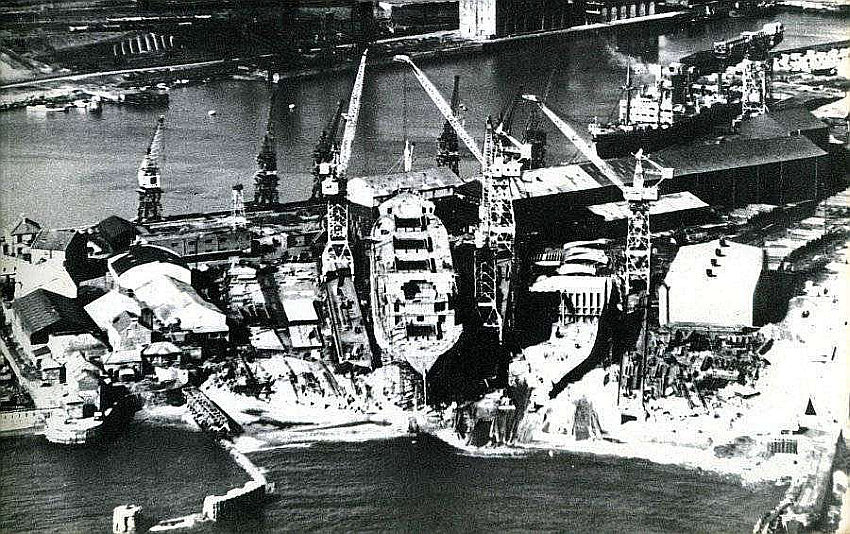
Here
we see the ‘Benrinnes’ under construction at Bartram & Sons
Ltd, Yard Number 233
Passenger
services:
The Benrinnes offered accommodation for 12 First Class passengers in the very best of comfort, for her voyages were long as she would sail to the Far East and also sail as far as Australia at times, depending the cargo’s, and she would and remain in ports for up to 5 or 6 days.
The ship had a beautifully furnished lounge with sofas and tables and chairs providing the ships guests the option to have conversation nooks or private reading areas, there was also a piano located in the centre of the forward wall. Windows were located on all three sides of the lounge providing ample light during the day as well as fresh air when required. Entertainment was generally organised by the passengers and it worked well, and considering these voyages tended to be rather long guests quickly came to know each other well and tended to enjoy them selves on board and when in port would often head off on various excursions together. The lounge being the main public venue on board was spacious for just 12 passengers and it was serviced by a waiter and there was a service bar. However, there was also a small writing room; both of these venues were located in the forward superstructure on Shelter Deck.
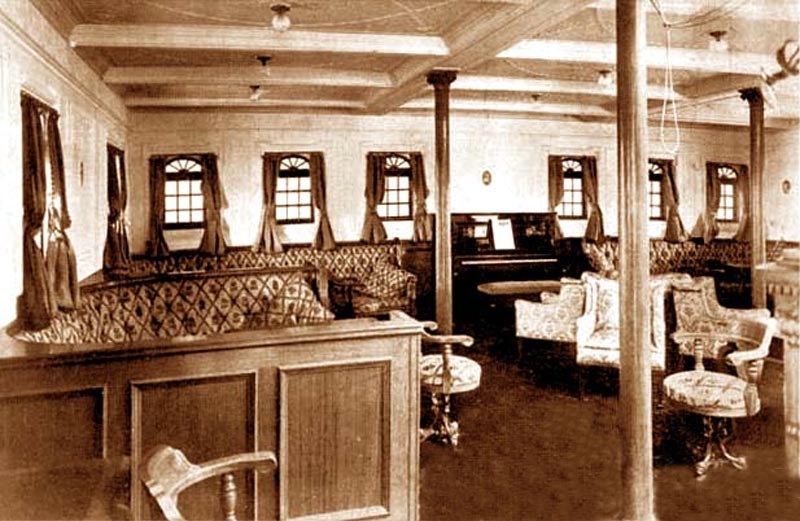
Although this lounge is technically not from the Benrinnes, but it is typical from an identical ship, size and the time built
Outside the door of the lounge there was a small lobby with a staircase going down directly into the dinning room, located below the lounge above. Aft of the lobby there were two passenger staterooms. Whilst further aft on Shelter Deck were the other six staterooms, thus there were a total of 8 passengers Staterooms. In all there were four two bedded rooms and four single bedded rooms, all staterooms had a window that could open, and all were comfortably furnished.
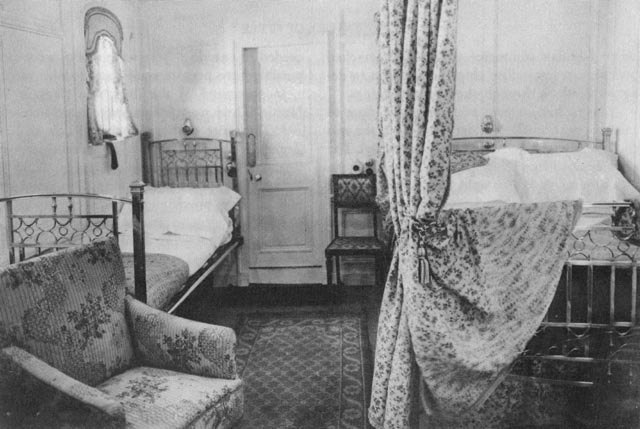
An example of one of the Benrinnes two bedded staterooms
Again as no photographs seem to exist, this is from a ship of an identical style & built around the very same time
When sailing on the S.S. Benrinnes every passenger was assured that ever luxury was made available, for, unlike what many tended to think, travelling on a cargo ship was not travelling on a budget, for this was sailing in sheer comfort and in luxury, eating the best and being well served, for this was “Ben Line Steamships Ltd” who only provided the very best of everything!
Service Record:
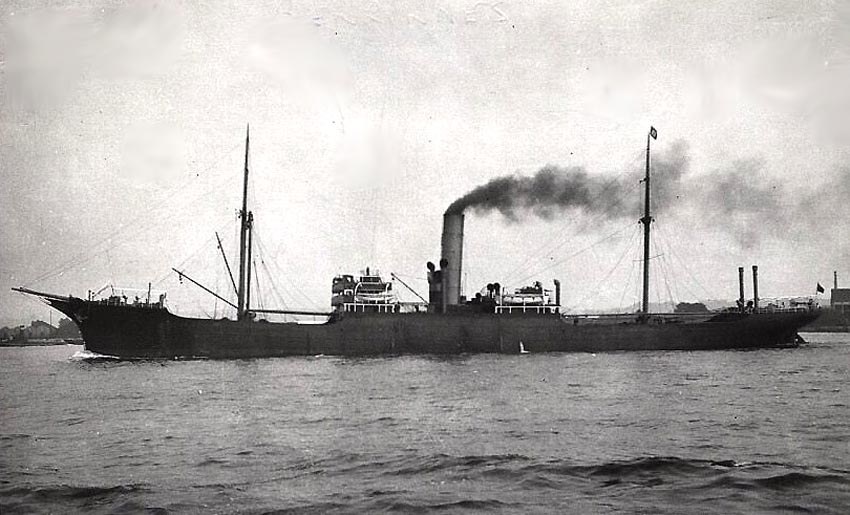
According to reports, passengers and her crew seem to remember her as being “a Happy Ship”
World War Two:
At the outbreak of World War One “
The first ship to be requisitioned was the
In December, 1916, the
Between the final two months of 1915 and the
end of 1917 the Government requisitioned six further of the
U-Boat Attack on the S.S. Benrinnes
On October 2, 1918 the S.S. Benrinnes amazingly survived what was turned out to be the last submarine enemy attack of the First World War, whilst she operated an Atlantic voyage, and a German Submarine had fired to torpedoes and thankfully both missed by just a little, but that was enough, for there was no damage whatsoever! Soon thereafter she was retuned to her owners, and she was restored to her original state.
Back in Regular Service:
For her crew and passengers, as well as ship lovers she reported that she was a much loved ship, and as I stated earlier, both passengers and her crew clearly revealed that she was also “a Happy Ship”.
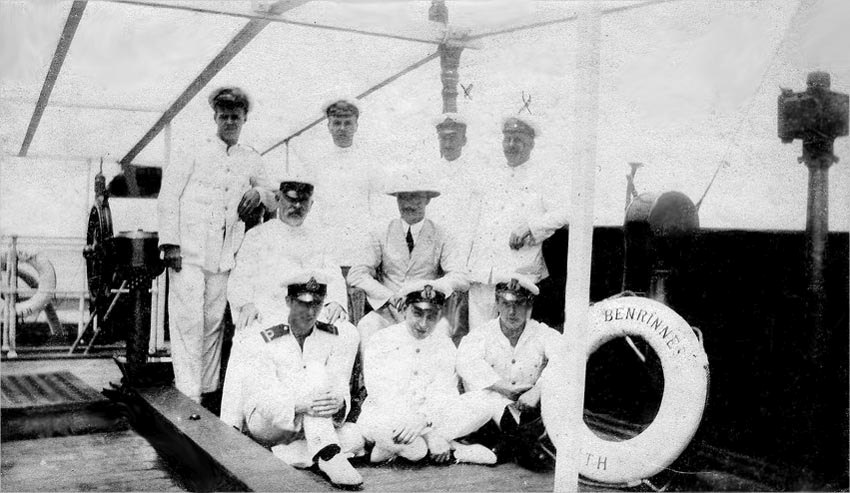
Officers
and a special passenger seen on the ships Bridge
The
Photographs above & below were kindly provided by
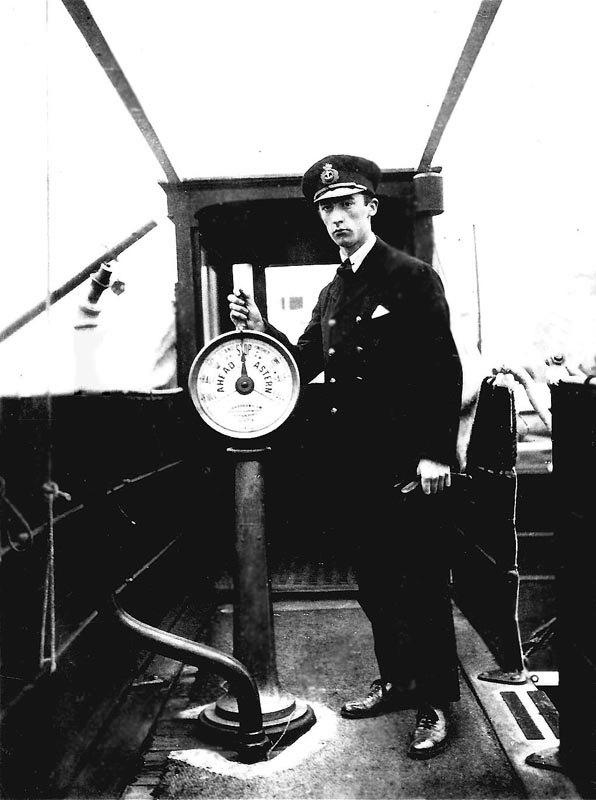
Jnr Officer on the Bridge wing
Thus it was obvious as 1930’s arrived, many began to worry that Ben Line might be soon thinking of disposing of her, due to the downturn in the British Shipping Industry as well as newer ships having come into service.
The magnificent and well maintained
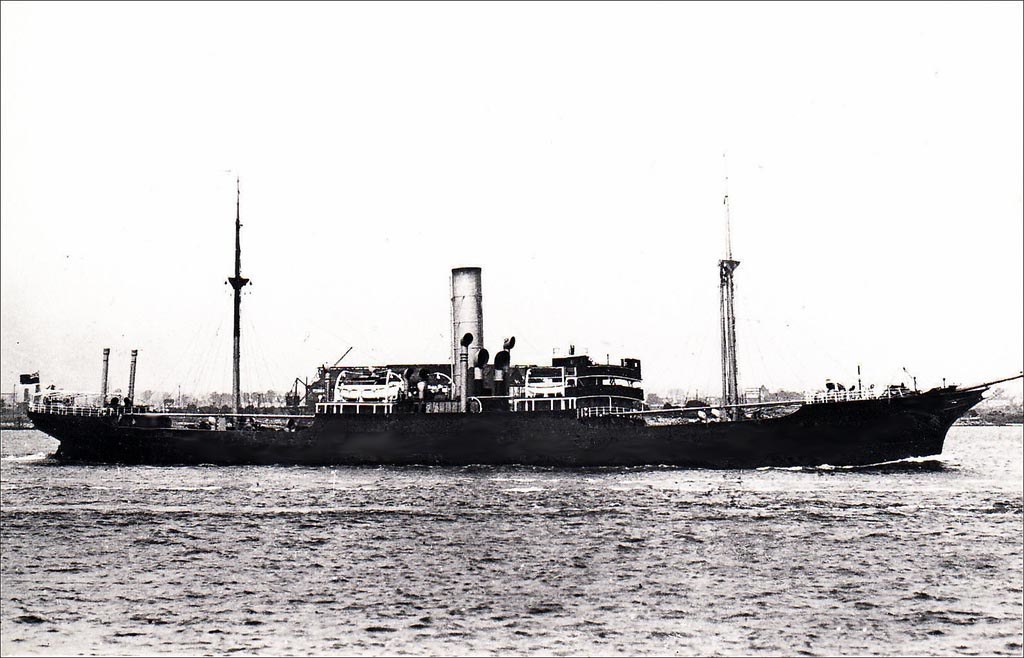
The
The crew and those who closely followed the
ship began to realise that by the mid 1930’s that it began to look like
that she would be sold, but although it would still be a number of years, but
it did occur in December 1937 when the Benrinnes was sadly sold.
The
short life of the S.S. Thorpeness:
Whilst S.S. Thorpeness was on a
normal merchant voyage from
Sadly 7 of her crew were killed and 8 others
were wounded, but the rest of her survivors did manage to get to safety,
considering they were not far from shore. The ship sank in deep waters and she
remains there to this day.
Tonnage:…………………………...4,798 GRT (Gross Registered Tons), 3,071 NRT (Net Registered Tons).
Length:……………………………….405 ft - 123,44 m.
Width:…………………………………51.5 ft - 15,67 m.
Draught:……………………………..26,9 ft - 8,15 m.
Power Plant:……………………….Triple expansion 3-Cylinder Engine 435 NHP,
by “North Eastern Marine Engineering Co. Ltd” of
Propellers:……………………………Single screw.
Speed:…………………………………12.5 knots - service speed.
Cabins:………………………………..8 First Class Staterooms - 4 twin bedded & 4 singles.
Passengers:………………………….12.
Crew:……………………………………37.
Holds:…………………………………..5.
In Conclusion:
We have already read the history of the
wonderful “Ben Line Steamers Ltd” company of
But, in this feature, I have only covered one
of their earlier wonderful steam ships and then the
M.S. Benvalla
The first ship is the 11,391
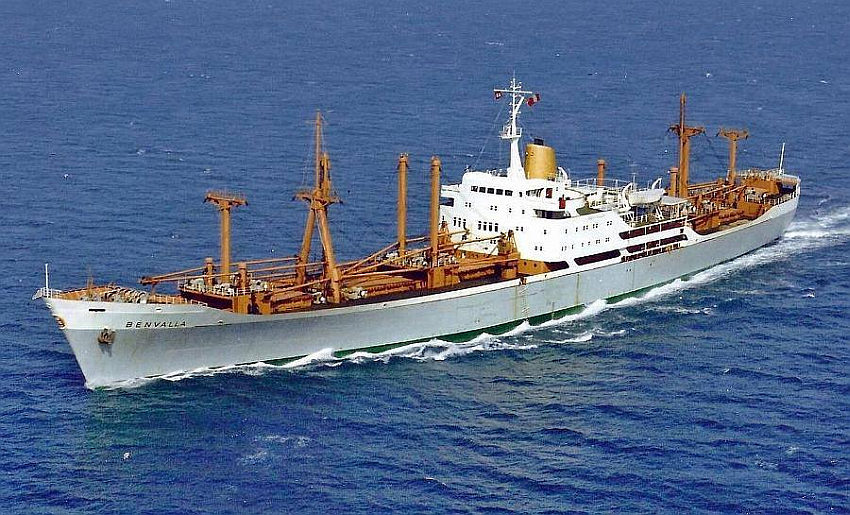
This series of ships were the last to have their superstructure amidships as you will note with the next ship!
The Benvalla (II)
was completed in 1979, but in 1987 she was chartered out to several companies,
which continued until early 1993 when she was returned to
S.S. Bencruachan
The next ship I would like to show you is the last design the company would feature, being the 1968 built, 12,092 GRT, S.S. Bencruachan (III), which unlike her earlier sister above was again a steam ship, but she was given the same engines as the QE2, being the then revolutionary Pametrada Steam Turbine design engines, having 20,000 SHP, giving her a service speed of 21.5 knots. One of this ships features were her twin slim-line upright funnels being almost a steal from the 1960 P&O S.S. Canberra.
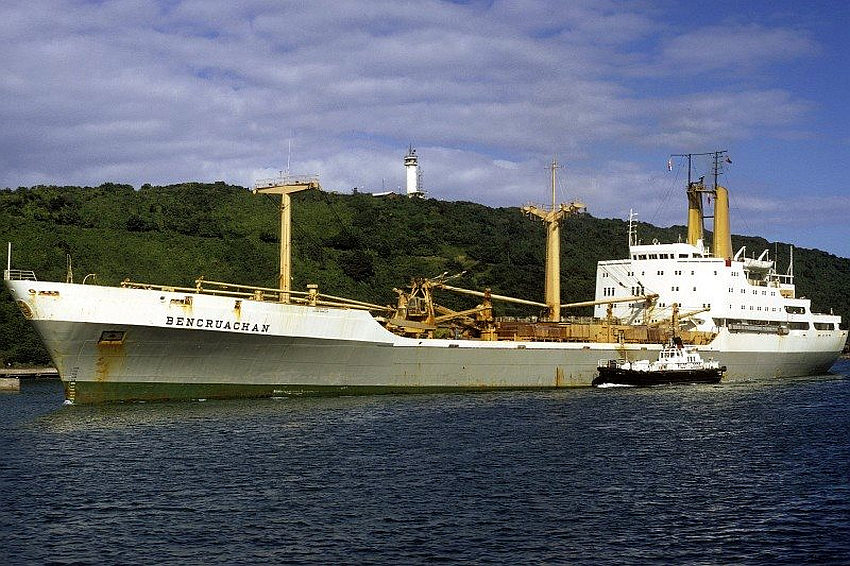
S.S. Bencruachan (III) had her superstructure located aft, providing additional passenger deck pace as well as a swimming pool
Her,
but she offered a great deal of comfort
M.S. Benlawers
Finally there is the 1970 completed 12,784 GRT, M.S. Benlawers (V). She was of a similar design as the ship, the S.S. Bencruachan (III) above, except it was decided to return to the traditional single funnel. Apart from that her aft layout was very much the same, and her passenger public rooms and accommodations were of the highest standards!
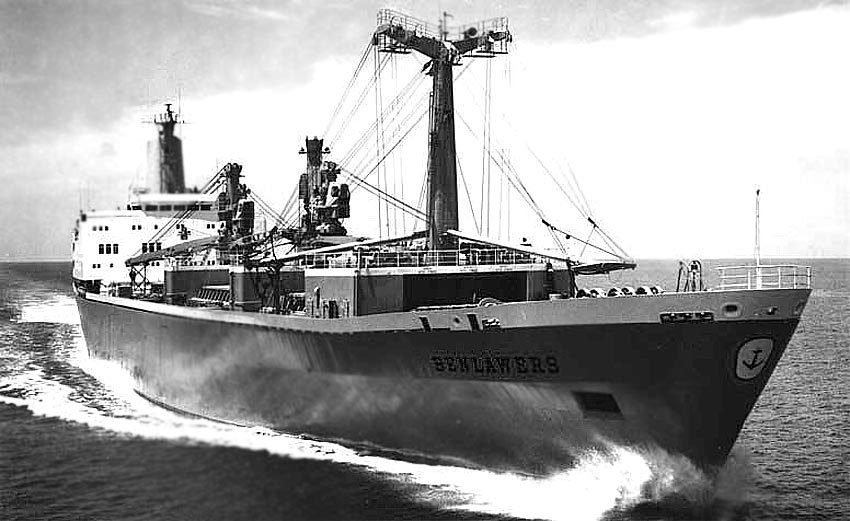
In October 1978 she was sold to “Zepconcorde Inc.,” of
I watched them come, I watched them go and I watched them die.”
Use the Back button on your browser or Close the Page to return to
the previous page
or go to our INDEX
Where you will discover over 1,125 Classic Liners & the 1914 built MV Doulos Feature
Photographs
on ssmaritime.com, & .net and associate sites are by: 1. By the author. 2. From
the author’s private collection. 3. Or as provided by Shipping Companies
and their Publicity Companies as well as by private photographers or
collectors. Credit is given to all contributors. However, there are some
photographs provided without details regarding the photographer concerned.,
therefore I hereby invite if owners of those images to be so kind and make
them-selves known to me per email at rg@ssmaritime.com in order that
due credit may be given
ssMaritime is owned
and © Copyright -
